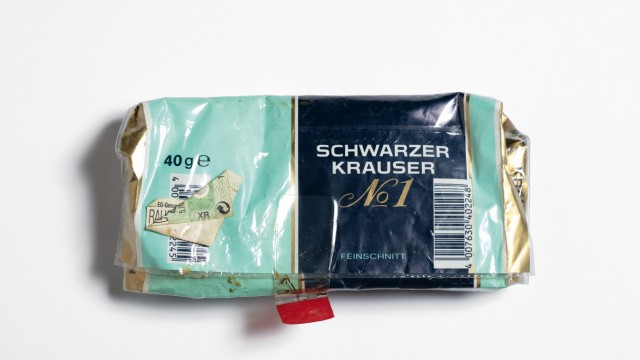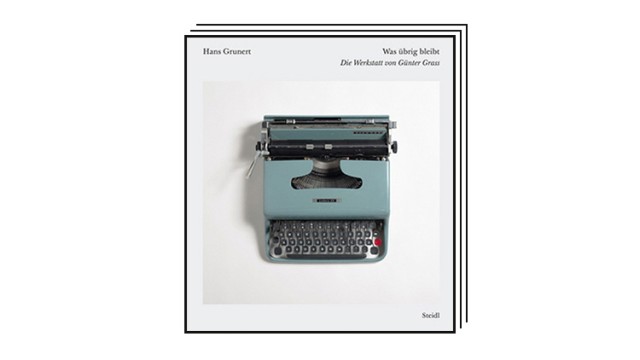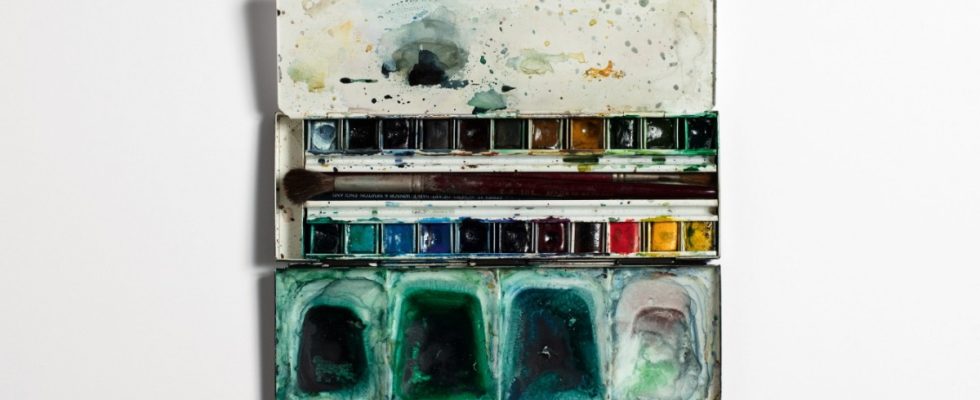Almost all things cast shadows in these images. The photographer Hans Grunert made sure of this when he took them against the same background, a light gray surface. Sometimes there is a straw hat on it, sometimes a pair of rusty scissors, sometimes the red ribbon from the Olivetti typewriter in its black spool. In these color photographs, the shadows discreetly confirm the three-dimensionality of things. They have lost the room from which they came, the workshop of the writer Günter Grass, who died in 2015, in the coach house of his home in Behlendorf, where he spent the last thirty years of his life.
Among other things, you can see it in the volume “What’s left”: This toad owned by Günter Grass.
(Photo: Hans Grunert/Steidl Verlag)
The literary scholar Heinrich Detering describes this space from his own memories in the text accompanying this illustrated book. It is called a workshop because Grass was not only an author, but also a visual artist who always emphasized the craftsmanship of his art. A charcoal printing pen lies on the light gray surface, an opened travel watercolor box, a sheet of recycled paper from VEB Nordhausen in the GDR and a copper eraser plate so flat that, like the paper, it does not cast a shadow.

The poet’s tobacco from his studio.
(Photo: Hans Grunert/Steidl Verlag)
An answer to the question of the moment the camera captured them could be: the moment they make their way to the archive. It may be that they will be included in an exhibition later. Not just the Olivetti Typewriter Type Lettera 22, the Montblanc fountain pen and Montblanc ink, the green Faber-Castell pencils in their old-fashioned tin box.
Long gone are the days when writers only appeared in literary exhibitions as reading or writing beings, surrounded by their books, manuscripts and letters. As here, the identity card and the pacemaker, the pipe, the opened pack of cigarette tobacco that you can roll yourself (“Schwarzer Krause No 1”) and the chef’s hat have long been part of it. And don’t this author’s collection items from the animal and plant kingdoms, the toad, the fossilized snail shell, the mushroom and the salamander, have close connections to his work? They would be shown in an exhibition and provided with comments.

Hans Grunert: What’s left. Günter Grass’ workshop. With a text by Heinrich Detering. Steidl Verlag, Göttingen 2023. 128 pages, 35 euros.
(Photo: Steidl)
Photographer Hans Grunert’s cool camera follows a different idea. She does not reject the associative connection between things and the life and work of the author. But it shows the things as objects released from his care, a visual inventory of an estate. Against the background of the same light gray rectangle, they take on an aesthetic life of their own. The matches in the round bowl of the small bronze ashtray and the rusty nails lie on top of each other like Mikado sticks, the fan heater, the folded folding stool and the folded three-legged chair look like objects found. Yes, all of these things come from Günter Grass’ workshop. But at the same time the studio of the photographer Hans Grunert.

